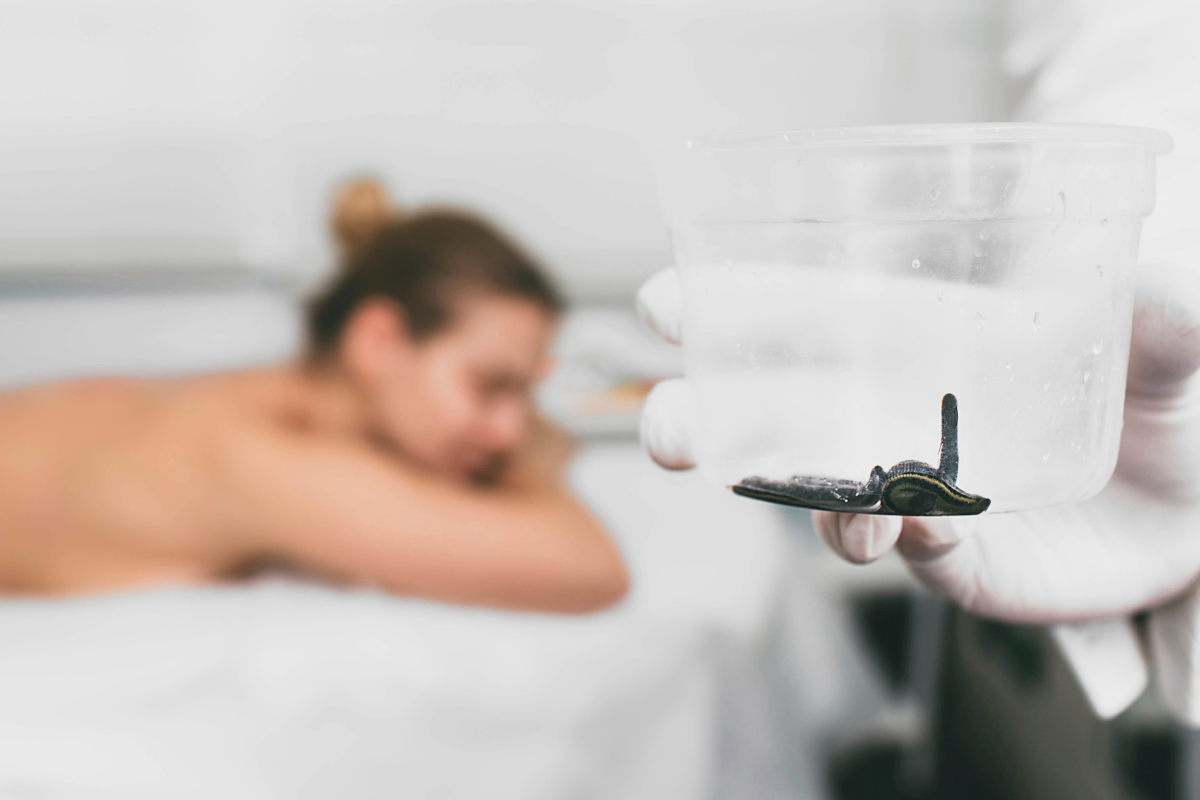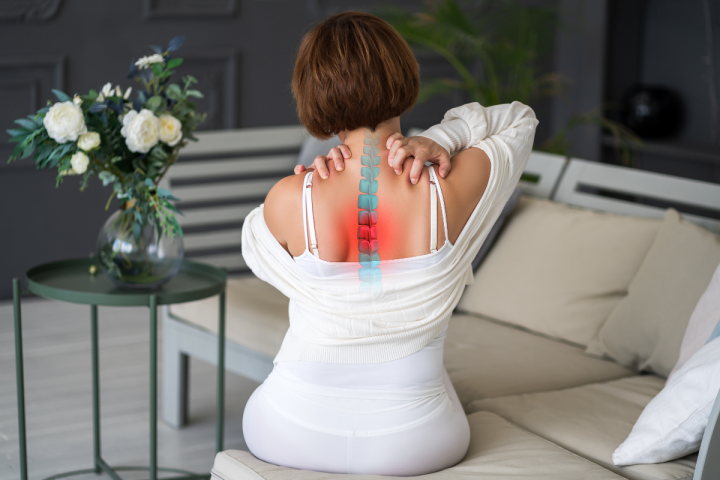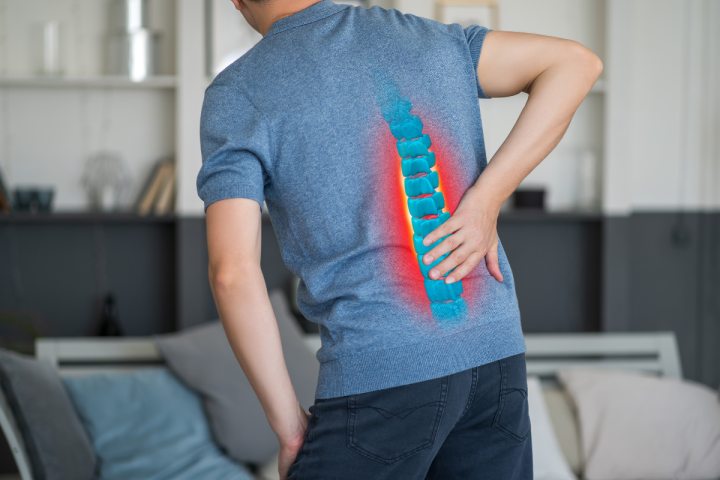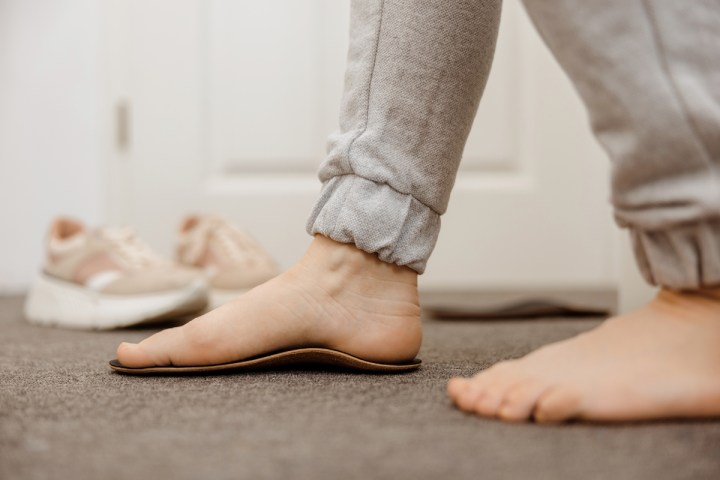Hirudotherapy is therapeutic method based on the use of living organisms. We are mainly talking about medicinal leeches, also known as hirudo medicinalis. However, it is worth noting that other species of these creatures are also used in various parts of the world. Although this method of treatment has been known for many years, it was only officially accepted as a therapeutic method in 2005. Read more!
What exactly is hirudotherapy, or leech counting?
Treatment with leeches has a marked effect on the whole body. Leeches used for therapeutic purposes are mainly sourced from specially selected farmed sources. Under natural conditions, they are mainly found in freshwater. Due to the risk of transmitting parasitic, bacterial and other diseases, medicinal leeches must only come from strictly defined, authorised breeding sources. The treatment of varicose veins with leeches is often mentioned in the context of common hirudotherapy applications.
How does leech therapy work?
It was once believed that placing leeches on the body allowed the removal of 'contaminated blood' from the body, but now, thanks to research, we know for sure that a key element in this process is the beneficial effect of substances present in the saliva of the medicinal leech. This mainly concerns hirudin. Hirudin has the ability to have an anticoagulant effect, meaning that it reduces blood clotting. In addition, other substances released by the leech show analgesic, or analgesic, properties. The enzymes released during this process also have antibacterial, anti-inflammatory and blood pressure-regulating effects. Recent research confirms that this method of treatment could, in the future, make an important contribution to the fight against thrombotic diseases and cancer, as leeches have been proven to have vasodilatory, anticoagulant and anticancer effects.
What does leech therapy help?
Leech therapy covers a wide range of therapeutic indications. Key ones include:
- arterial hypertension;
- high cholesterol;
- struggles with impotence.
- diabetes;
- haemorrhoid problems;
- supporting the healing process in skin grafts;
- headaches;
- gastric and duodenal ulcers;
- allergies;
- certain psychiatric conditions, such as neuroses or depression;
- thromboembolic diseases;
- conditions related to the genitourinary system.
Medicinal leeches are also used in the case of many other ailmentswhere their use may seem unusual. They are used for liver disorders, varicose veins, psoriasis and also in the treatment of endocrine diseases such as thyroid disorders. Due to the anti-inflammatory and analgesic properties of the substances released, this form of therapy can benefit as part of a holistic approach in the treatment of spinal hernias, sciatica pain or radiculitis. Leeches are also effective in treating neurodegenerative diseases, reducing swelling, and their use is also found in the field of aesthetic medicine.
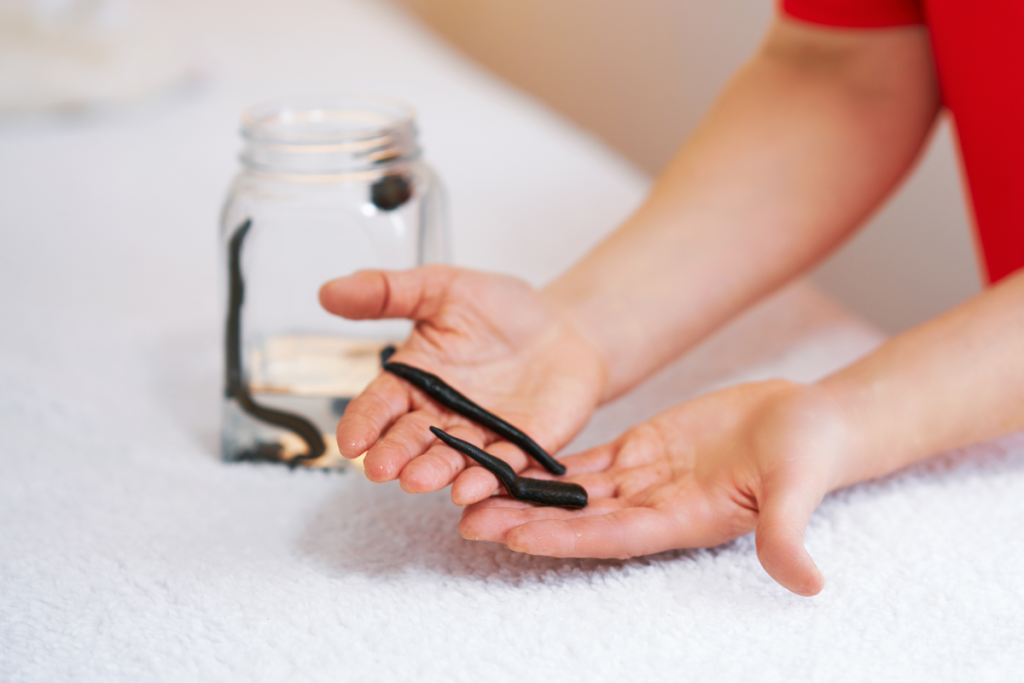
What are the contraindications?
Restrictions on the use of leech therapy can be divided into relative and absolute contraindications. In the category of absolute contraindications, no consideration is allowed for the use of medicinal leeches.
Relative contraindications of hirudotherapy include:
- conditions of lowered blood pressure,
- concomitant use of a number of different pharmacological agents, such as anti-inflammatory drugs or
- substances that cause blood thinning, e.g. acetylsalicylic acid,
- predisposition to bleeding,
- gastric diseases such as erosive mucositis,
- allergy to proteins,
- age under 10 years.
Absolute contraindications include:
- pregnancy period,
- states of severe malnutrition and anaemia,
- diseases associated with blood clotting disorders, including haemophilia,
- menstruation,
- HIV infection,
- active tuberculosis,
- presence of fever.
The use of this type of therapy requires special attention in people with mental disorders such as depression or neurosis, although these are not an absolute contraindication.
Leech therapy and side effects
As with any type of therapy, the use of leech therapy carries the risk of side effects. Potential complications of hirudotherapy mainly include bacterial infections caused by microorganisms of the Aeromonas family. In this situation, symptoms such as diarrhoea, vomiting, the appearance of blisters on the skin and fever may occur. These symptoms may be more severe in immunocompromised individuals or when there is doubt about the origin of the leeches used. In addition, allergic reactions, itching sensations or the appearance of haematomas are possible.
During the therapy, it is crucial to provide the body with adequate supplements (such as magnesium and potassium), as persistent bleeding after the treatment can lead to a reduction in haemoglobin levels, which in turn can result in anaemia. The leech attachment process itself can leave minor scarring, which is important to take into account, especially if the therapy is carried out on visible areas. Typically, wounds heal relatively quickly, although not always.

